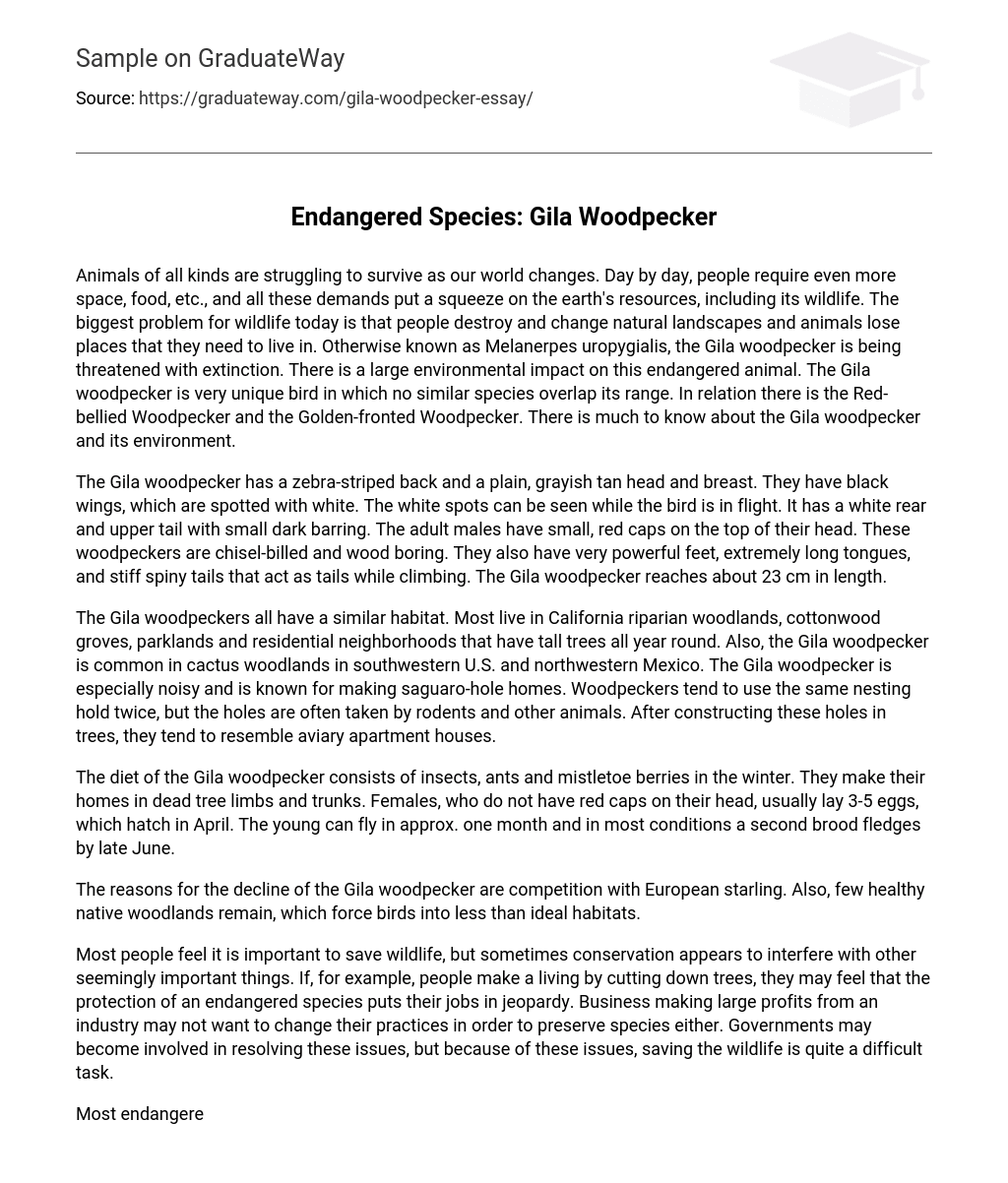Animals of all kinds are facing challenges in their survival as our world continues to change. The earth’s wildlife is under strain due to increasing demands for space, food, and resources by humans. One major issue that wildlife faces today is the destruction and alteration of natural habitats, which leaves animals without necessary living spaces.
Melanerpes uropygialis, scientifically known as the Gila woodpecker, is an endangered species particularly threatened by these environmental changes. Unlike the Red-bellied Woodpecker or the Golden-fronted Woodpecker, this unique bird does not share its range with any similar species.
Understanding more about the Gila woodpecker and its relationship with its environment is crucial.
The Gila woodpecker is characterized by its striped back resembling a zebra and plain, grayish tan head and breast. During flight, its wings display black coloration with visible white spots. The woodpecker also features a white rear and upper tail with dark barring. Adult males of this species have small red caps on their heads. This type of woodpecker possesses a chisel-like bill for boring into wood, along with powerful feet, long tongues, and stiff spiny tails that aid in climbing. The average length of the Gila woodpecker is approximately 23 cm.
All Gila woodpeckers share a similar habitat, residing in California riparian woodlands, cottonwood groves, parklands, and residential neighborhoods with tall year-round trees. They are also commonly found in cactus woodlands in the southwestern United States and northwestern Mexico. Known for their noisiness, the Gila woodpeckers are famous for creating saguaro-hole homes. Although they typically reuse nesting holes, these holes often get occupied by rodents and other creatures. Consequently, the holes constructed by Gila woodpeckers end up resembling aviary apartment homes.
The Gila woodpecker has a diet consisting of insects, ants, and mistletoe berries in the winter. They usually construct their nests in dead tree limbs and trunks. Female Gila woodpeckers, identified by their absence of red caps on their heads, typically lay 3-5 eggs. These eggs generally hatch in April. The juvenile birds acquire the ability to fly within approximately one month, and most often, another set of young birds departs from the nest by late June.
Competition with European starlings and the scarcity of healthy native woodlands are responsible for the decline of the Gila woodpecker. These factors force the birds to inhabit less ideal habitats.
Many individuals recognize the significance of preserving wildlife, yet occasionally conservation efforts can clash with other perceived priorities. For instance, those employed in logging may view the safeguarding of endangered species as a threat to their livelihoods. Likewise, industries generating substantial profits may resist altering their methods to protect these species. Governments may attempt to address these conflicts, but due to their complexity, conserving wildlife proves to be a challenging endeavor.
Most endangered species are not widely recognized and lack popularity among humans, despite their crucial ecological roles. However, these creatures are essential components of the world’s biodiversity and deserve significant conservation efforts to preserve them in their natural habitats, which we all call home.





